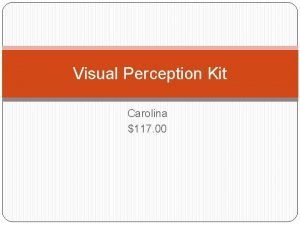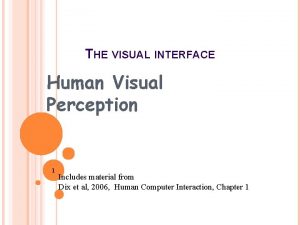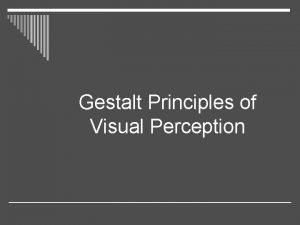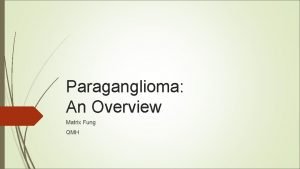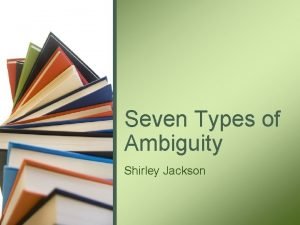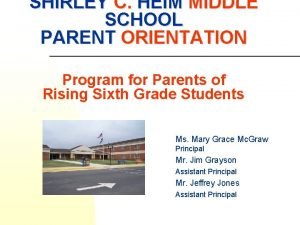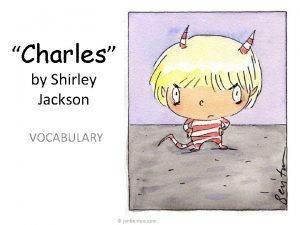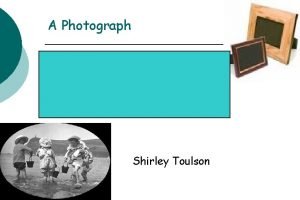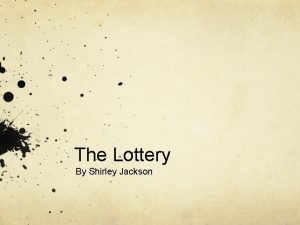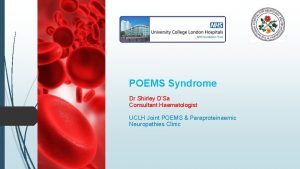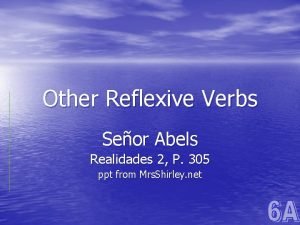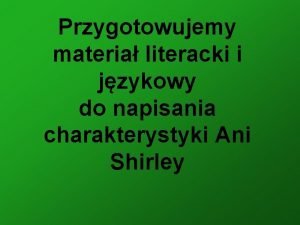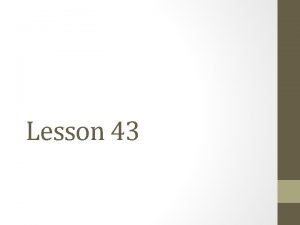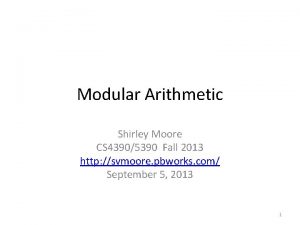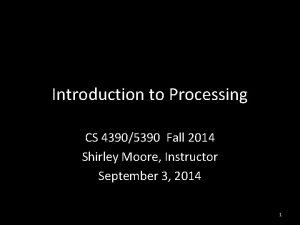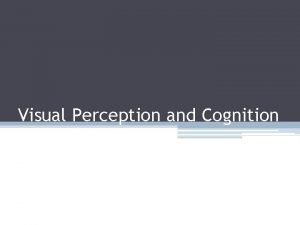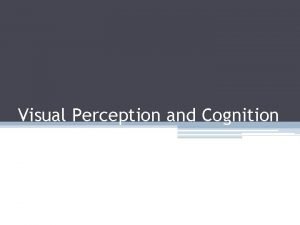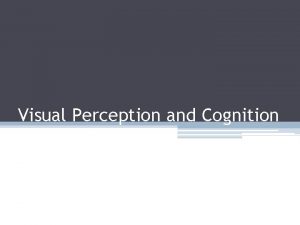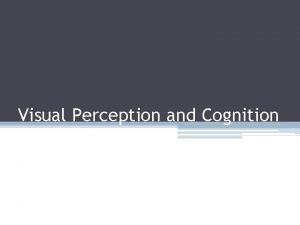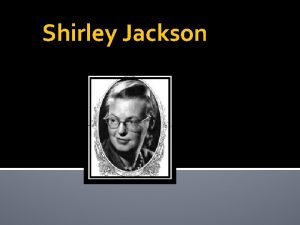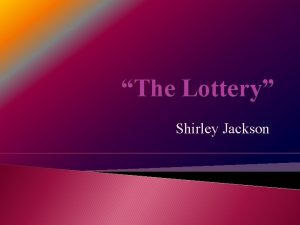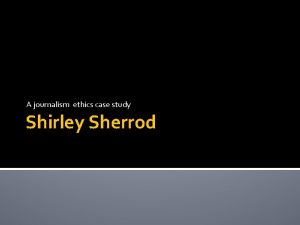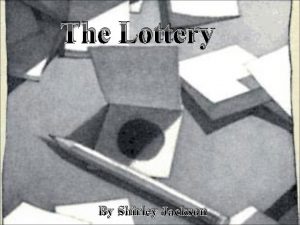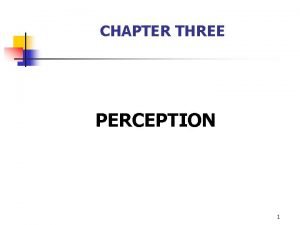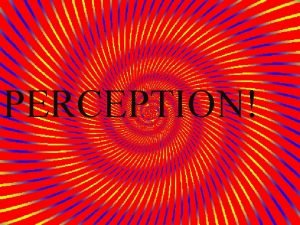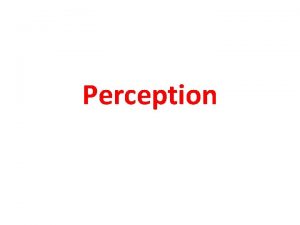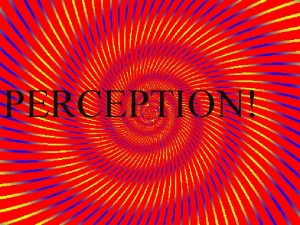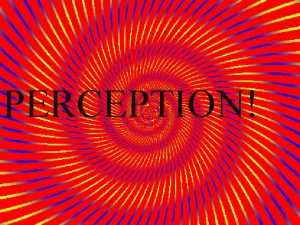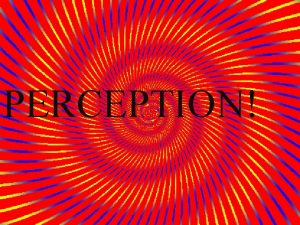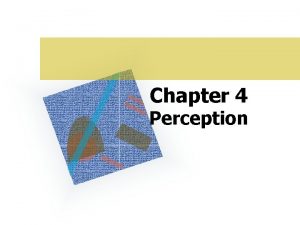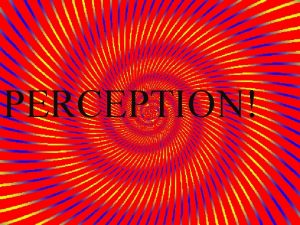Visual Perception CS 43905390 Fall 2014 Shirley Moore
























- Slides: 24

Visual Perception CS 4390/5390 Fall 2014 Shirley Moore, Instructor September 8, 2014 1

Announcements • Dr. Moore’s office hour today is at 2 pm instead of 3 pm • CS Seminar, Dorian Arnold, UNM, 3 -4 pm Thursday Sept 11, “Scalable Middleware and Tools for High Performance Computing”, location TBD • HW 1 grades posted on Black. Board • Reminder: NSF/Popular Science Vizzies deadline Sept 30 2

From last class: Class Exercise 2: Location Data for the Map • Now let’s draw a red circle in the center of each state, with the size of the circle representing the state’s population. • Download the following two files and add them to the sketch: – http: //benfry. com/writing/map/locations. tsv – http: //benfry. com/writing/map/Table. pde – The second file contains code to read the data in the first file into a table. • Find population data on the Web and add the data to the sketch. • Draw the required circles on the map. • Add rollovers to show the state name and population when the mouse hovers over it. 3

The Human Eye 4 Image credit: http: //sciencewithme. com/learn-about-the-human-eye/

Retina with Rod and Cone Cells Image credit: http: //blog. eyewire. org/behind-the-science-fundamentals-of-the-retina/ 5

Distribution of “brain pixels” (Ware 2008) 6

Visual Cortex Image credit: http: //mikeclaffey. com/psyc 170/notes-vision. html 7

Visual Attention • We apprehend only a tiny amount of the visual information in our surroundings. • We sample the visual world on a need-toknow basis. • Visual attention consists of a series of visual queries – eye movements – pattern matching • Both bottom-up and top-down processing 8

Stages of Visual Cognition • Feature processing – Parallel processing of visual field by billions of neurons in V 1 area of visual cortex – Orientation and size, red-green, yellow-blue, direction of motion • Pattern construction – Visual space divided into regions – Chains of features connected to form contours • Object formation – Features and patterns distilled into visual objects – About three visual objects can be held in visual working memroy at one time. – Objects linked to non-visual information 9

Implications for Visual Design • Analyze visual tasks • Break tasks down into visual queries • Design displays so that visual queries can be processed correctly and quickly for every important cognitive task – Support the most important and frequent visual queries with visually distinct symbols • Example: public transit map 10

Visual Distinctness • Based on early low-level feature processing system • If we are looking for something small, we can only see it when we are lookng at it. How do our eyes get directed to the right location – Visual scanning – Biased shouting mechanism • Want target to be distinct in some feature channel of the V 1 area • Hard-wired in the brain, not learned 11

Basic Feature Channels 12

Do any circles appear distinct? 13

14

15

16

17

Find the symbol that is different 18

19

Conjunction 20

Visual Conjunction • Trying to find a target based on two features • Most visual conjunctions hard to see • Neurons sensitive to conjunctive patterns are farther up the processing pathway and cannot be used to plan eye movements. 21

Motion • Motion generates an orienting response. • Most powerful orienting response is elicited by things that move into the visual field. • Hard to suppress orienting response – use sparingly! 22

Visual Search Process – Where’s Waldo? Image credit: http: //eyetrackingupdate. com/2010/02/01/where%E 2%80%99 s-waldoeye-tracking-only-registers-half-of-the-visual-search-process/ 23

Preparation for Next Class • Read Ware Chapter 4 and Munzner Chapter 10 on Color • Continue working on Lab 1 – Bring questions and problems to class on Wednesday! 24
 Cornelia ruland
Cornelia ruland Data flow visualization
Data flow visualization Carolina visual perception kit
Carolina visual perception kit Two stages of vision in hci
Two stages of vision in hci Reversible figure ground relationship
Reversible figure ground relationship Reversible figure ground relationship
Reversible figure ground relationship Apakah maksud visual pada kata pemrograman visual ?
Apakah maksud visual pada kata pemrograman visual ? Paraganglioma radiopaedia
Paraganglioma radiopaedia What do the stones symbolize in the lottery
What do the stones symbolize in the lottery Shirley jackson seven types of ambiguity
Shirley jackson seven types of ambiguity Shirley gaw
Shirley gaw Shirley c heim middle school calendar
Shirley c heim middle school calendar The lottery by shirley jackson vocabulary
The lottery by shirley jackson vocabulary The cardboard shows the pictures of?
The cardboard shows the pictures of? Lida zheng northwestern
Lida zheng northwestern Shirley phan
Shirley phan Dr shirley wray
Dr shirley wray The lottery by shirley jackson discussion questions
The lottery by shirley jackson discussion questions Whats the theme of the lottery by shirley jackson
Whats the theme of the lottery by shirley jackson Shirley d'sa
Shirley d'sa Verbs
Verbs Umysłowość zdolności ani shirley
Umysłowość zdolności ani shirley Miejsca w ani z zielonego wzgórza
Miejsca w ani z zielonego wzgórza Foreshadowing examples in the lottery
Foreshadowing examples in the lottery What is the theme in the story the lottery
What is the theme in the story the lottery


